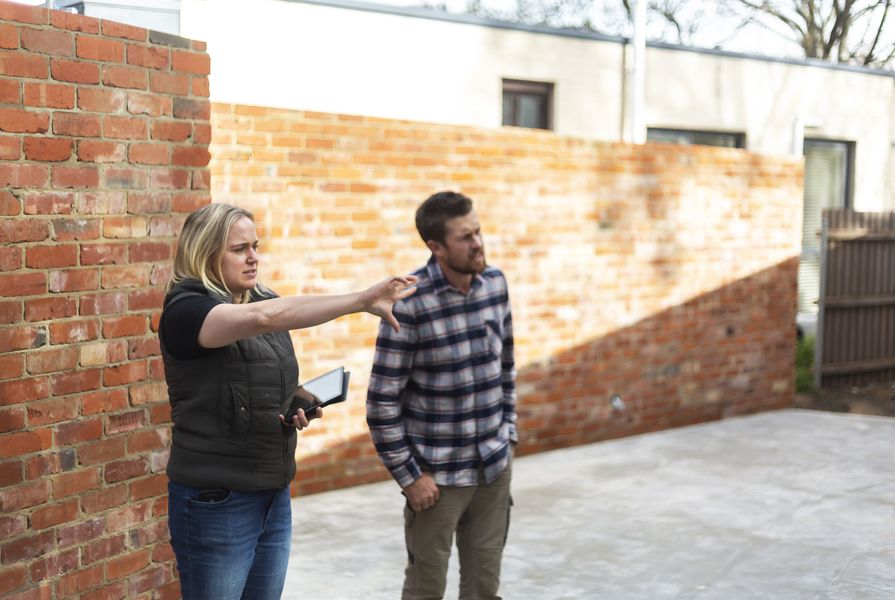It’s the last working week of December, and if I close my eyes, I can feel a trifle of emotions swirling in my stomach. Of course, there’s the anticipation of a break and the excitement for how I would hope to spend those blissful few weeks when our industry shuts down, and the phones stop ringing. But paired with this is the stress that this powerful invisible line in time brings annually: will we get this issued before Christmas? Can we invoice that client this week? How much leave is so-and-so taking? And of course, I’m procrastinating by writing this article.
By the time you’re reading this, we will have plunged through the cultural chasm of Christmas and entered the new year, when the third and final emotion in my tummy becomes much louder. She’s the one who asks, “why?”
Why do we do it? We know this profession can be a hard slog. We’re expected to be across a breadth of information that would rival a GP, while embodying the skill of an artist, simultaneously exposing ourselves to legal risks akin to that of a builder, all while consistently earning less than comparable professionals.
So why do we do it?
If you’ve ever done a Myers Briggs Personality Test, you may have seen one of the personalities labelled the “architect,” among other more descriptive titles like “adventurer”, “logistician” and “protagonist” (guilty!). According to 16 Personalities, the architect (INTJ) has a pioneering spirit, a thirst for knowledge, and an awkward tendency to value truth and depth over politeness or social norms. According to 16 Personalities, “At times, architects may even wonder whether dealing with other people is worth the frustration”. (I saw you smirk then.) “Architects are full of contradictions. They are imaginative yet decisive, ambitious yet private, and curious yet focused.” It concludes that architects “never lose faith that, with enough ingenuity and insight, they can find a way to win – no matter what challenges might arise along the way.”
Let’s remind ourselves that these words are written about a personality type that only a small percentage of us will identify with, but for many I think the sentiment behind the stereotype will hit home.
As we face the new year and that voice that asks us why, let’s reframe the question to “What keeps us going?” How do we maintain momentum in our architecture careers, and how can we pursue more of the stuff that energises and less of the stuff that doesn’t?
I asked this question on a forum of Australian architects and the answers seemed to fall under three categories.
-
The outcome or purpose
Do you remember the first time you saw a finished project that you had drafted or designed? Or the first time you saw users interacting with the spaces? Or the first time clients expressed how you had changed their lives? These moments are like highly addictive drugs for architects. It’s probably the reason we became architects in the first place, and it’s often the powerful big-picture impact that we crave.
Finley Pitt from Inc Arc hit the nail on the head by answering, “I really like having projects built, but really, the main motivator for me is helping people. Helping people work out what they want, in the best way possible for them, in the best way possible for the environment, in the best way possible on the site, and in the best way possible in the climate. It’s really just about using skills, knowledge, and experience to help people.”
Nicole Dovey from Drawing Room Architecture echoed a similar sentiment, “In some jobs, the outcome of a year’s work is an article or a paper or a policy. With architecture, I love that something you’ve been imagining from all angles in your mind, then on paper, gets hand built, 1:1, in front of you by a team of experienced people and that a family lives in it for a large part of their life.”
These sentiments make me wonder, is there a way to extend this motivational feeling beyond the final handover moment, and get more of it? I’m reminded here of the current trend of “manifesting”; the practice of thinking aspirational thoughts for the purpose of making them eventuate. We can remind ourselves of these moments by keeping testimonials or project boards nearby, revisiting our favourite stories in blogs or publications, and therefore creating strategies that attracts more of these well-matched projects and clients.
Similarly, we can focus on our purpose. Why is the finished project so satisfying? Is it a well-executed aesthetic, a high level of functionality, or inspirational sustainability? Whatever floats your boat, we can lean into it. Practice it, pursue it, and publish our goals. This will make the big-picture achievements even sweeter.
-
The process. The practice.
Other architects approached my question from a very different angle, using the day-to-day actions of architecture as a source of their motivation.
Paul Cooksey from Northern Edge Studio commented, “For me it’s the small tasks. Little weekly or daily status reviews remind me of the details I need to resolve, the emails I need to write, or the calls I need to make to move the process forward. Personally, I can’t focus on the larger built goal too much as it’s often too far away or too dependent on other forces. I focus on what I can do.”
This comment reminds me of the book Atomic Habits, by James Clear, which is based on a belief that “All big things come from small beginnings. The seed of every habit is a single, tiny decision. But as that decision is repeated, a habit sprouts and grows stronger. Roots entrench themselves and branches grow.”
While the big “end moments” from the first point may be the goal, we need successful daily, weekly, and monthly processes to help our very human selves get there. James Clear offers a simple formula for these daily habits: firstly, a cue (what is your prompt to do the thing); secondly, a craving (how do you remind yourself that you want to do it); thirdly, a response (how do you make it easy to act); and finally, a reward (make it a satisfying endeavour).
For example, if your goal is to work on your templates and standards more often, your cue might be a set time in your calendar each week, your craving might be a reminder of what will be easier once you’ve done it, your ease of response might come from have a set plan of small chunks to tackle each session, and your reward might be a Friday stroll to the coffee shop once complete.
-
Taking care of the human
Many commenters related momentum to energy, and mentioned that they maintained this energy through variety, supplementary learning, networking, giving back, spending time outside of the profession, advocacy, teaching, research, seeking new experiences, and always learning.
These people are touching on the common human desire for fulfilling days and being mindful of what they personally need or enjoy. These people find momentum in looking after their mental health.
Of all the responses I received, the most interesting came from Sarah Hobday-North, founder of Architect GP. “I’m motivated (to my shock) by new business models. There is so much more that architects can do than see a project through from start to finish. The process is long and we can learn to specialize, refer and collaborate along the way.
“This is especially important, and I think liberating, for sole practitioners. It is a brutal business model … I want to see more adaptable, flexible and transactional business models. Spread the love into new markets! Do the bits you love!”
This response is clearly from someone who has not only looked at their own “why,” but also the profession’s “why.” I also think it’s an answer that could have fit into all three categories above.
While much of our job is shaped by external forces, architects still hold a great deal of control over the machine they’ve built to make the work happen. We also hold the privilege of shaping the contribution and involvement of the vast range of people we work with, like a conductor coordinating the individual skills and talents of an orchestra. Whether you’ve returned to work refreshed and eager to bite into work, or you’ve stumbled into the office somewhat resistantly with the shadow of dread looking over your shoulder, I hope you can find a calm moment to reflect on your own “why,” or “how,” and take away value from the shared sentiments above to fine tune your own machine or successfully conduct this year’s architectural orchestra.
















